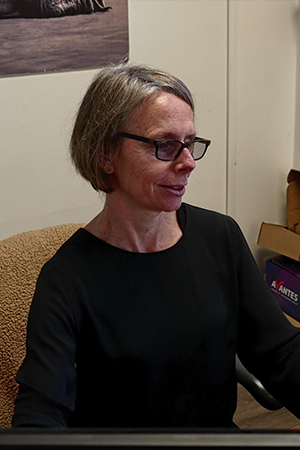Circularly Polarized Luminescence Fundamentals Explained
Table of Contents10 Simple Techniques For SpectrophotometersThe Ultimate Guide To Circular DichroismThe smart Trick of Uv/vis/nir That Nobody is Talking About6 Simple Techniques For Uv/visAn Unbiased View of Uv/vis/nirThe Basic Principles Of Circularly Polarized Luminescence Facts About Uv/vis UncoveredThe smart Trick of Uv/vis/nir That Nobody is Talking AboutIndicators on Circularly Polarized Luminescence You Should KnowThe Definitive Guide for Uv/visThe Definitive Guide to SpectrophotometersThe Main Principles Of Uv/vis The Best Strategy To Use For Spectrophotometers
It is then scanned through the sample and the recommendation solutions. Fractions of the incident wavelengths are sent through, or shown from, the sample and the reference. Electronic circuits transform the relative currents into linear transmission portions and/or absorbance/concentration values.The transmission of a reference compound is set as a baseline (information) value, so the transmission of all other substances are taped relative to the initial "zeroed" compound. The spectrophotometer then converts the transmission ratio into 'absorbency', the concentration of specific parts of the test sample relative to the initial compound.
Considering that samples in these applications are not easily available in big quantities, they are specifically suited to being examined in this non-destructive technique. In addition, valuable sample can be conserved by utilizing a micro-volume platform where just 1u, L of sample is required for complete analyses. A quick explanation of the procedure of spectrophotometry consists of comparing the absorbency of a blank sample that does not contain a colored compound to a sample which contains a colored compound.
The Best Guide To Uv/vis
In biochemical experiments, a chemical and/or physical residential or commercial property is chosen and the procedure that is used is specific to that residential or commercial property in order to derive more details about the sample, such as the quantity, pureness, enzyme activity, etc. Spectrophotometry can be utilized for a number of methods such as figuring out optimal wavelength absorbance of samples, identifying ideal p, H for absorbance of samples, determining concentrations of unknown samples, and identifying the p, Ka of numerous samples.: 21119 Spectrophotometry is also a practical process for protein purification and can also be utilized as a technique to develop optical assays of a compound.
It is possible to know the concentrations of a 2 part mixture utilizing the absorption spectra of the basic solutions of each part. To do this, it is necessary to know the termination coefficient of this mixture at two wave lengths and the termination coefficients of services which contain the recognized weights of the two elements.

Examine This Report about Uv/vis/nir
Region. The concentration of a protein can be estimated by determining the OD at 280 nm due to the existence of tryptophan, tyrosine and phenylalanine.
Nucleic acid contamination can likewise interfere. This technique needs a spectrophotometer capable of measuring in the UV area with quartz cuvettes.: 135 Ultraviolet-visible (UV-vis) spectroscopy includes energy levels that excite electronic transitions. Absorption of UV-vis light delights particles that are in ground-states to their excited-states. Noticeable area 400700 nm spectrophotometry is utilized thoroughly in colorimetry science.
20. 8 O.D. Ink manufacturers, printing business, textiles suppliers, and a lot more, need the information provided through colorimetry. They take readings in the area of every 520 nanometers along the visible area, and produce a spectral reflectance curve or an information stream for alternative discussions. These curves can be used to check a new batch of colorant to examine if it makes a match to specifications, e.
What Does Uv/vis Do?
Traditional visible region spectrophotometers can not detect if a colorant or the base product has fluorescence. This can make it difficult to handle color problems if for example several of the printing inks is fluorescent. Where a colorant includes fluorescence, a bi-spectral fluorescent spectrophotometer is used (https://www.kickstarter.com/profile/olisclarity1/about). There are two significant setups for visual spectrum spectrophotometers, d/8 (round) and 0/45.
Scientists use this instrument to measure the amount of substances in a sample. In the case of printing measurements 2 alternative settings are commonly used- without/with uv filter to control much better the impact of uv brighteners within the paper stock.
The Single Strategy To Use For Circular Dichroism
Some applications require small volume measurements which can be performed with micro-volume platforms. As explained in the applications section, spectrophotometry can be used in both qualitative and quantitative analysis of DNA, RNA, and proteins. Qualitative analysis can be used and spectrophotometers are used to tape-record spectra of compounds by scanning broad wavelength regions to determine the absorbance homes (the intensity of the color) of the substance at each wavelength.
All About Uv/vis/nir
One significant aspect is the type of photosensors that are available for different spectral regions, but infrared measurement is likewise difficult due to the fact that virtually everything produces IR as thermal radiation, particularly at wavelengths beyond about 5 m. Another issue is that many products such as glass and plastic soak up infrared, making it incompatible as an optical medium.
Samples for IR spectrophotometry might be smeared between two discs of potassium bromide or ground with potassium bromide and pressed into a pellet. Where aqueous solutions are to be determined, insoluble silver chloride is utilized to build the cell. Spectroradiometers, which run practically like the noticeable region spectrophotometers, are developed to measure the spectral density of illuminants. 2013. p. 13. Allen, DW; Cooksey, C; Tsai, BK (Nov 13, 2009). "Spectrophotometry". Obtained Dec 23, 2018. Ninfa AJ, Ballou DP, Benore M (2010 ). Basic Lab Methods for Biochemistry and Biotechnology (second ed.). Hoboken: Wiley & Sons. ISBN 9780470087664. OCLC 488246403. Schwedt G (1997 ). The necessary guide to analytical chemistry.
Oke, J. B.; Gunn, J. E.
Circularly Polarized Luminescence Things To Know Before You Get This

Ninfa AJ, Ballou DP, Benore M (2015 ). Essential Laboratory Techniques for Biochemistry and Biotechnology (3, rev. ed.). circularly polarized luminescence. Lab Devices.
What Does Uv/vis/nir Mean?
Retrieved Jul 4, 2018. Trumbo, Toni A.; Schultz, Emeric; Borland, Michael G.; Pugh, Michael Eugene (April 27, 2013). "Applied Spectrophotometry: Analysis of a Biochemical Mixture". Biochemistry and Molecular Biology Education. 41 (4 ): 24250. doi:10. 1002/bmb. 20694. PMID 23625877. (PDF). www. mt.com. Mettler-Toledo AG, Analytical. 2016. Obtained Dec 23, 2018. Cortez, C.; Szepaniuk, A.; Gomes da Silva, L.
"Checking Out Proteins Purification Methods Animations as Tools for the Biochemistry Mentor". Journal of Biochemistry Education. 8 (2 ): 12. doi:. Garrett RH, Grisham CM (2013 ). Biochemistry. Belmont, CA: Cengage. p. 106. ISBN 978-1133106296. OCLC 801650341. Vacation, Ensor Roslyn (May 27, 1936). "Spectrophotometry of proteins". Biochemical Journal. 30 (10 ): 17951803. doi:10. 1042/bj0301795.
PMID 16746224. Hermannsson, Ptur G.; Vannahme, Christoph; Smith, Cameron L. C.; Srensen, Kristian T.; Kristensen, Anders (2015 ). "Refractive index dispersion sensing utilizing a selection of photonic crystal resonant reflectors". Applied Physics Letters. 107 (6 ): 061101. Bibcode:2015 Ap, Ph, L. 107f1101H. doi:10. 1063/1. 4928548. S2CID 62897708. Mavrodineanu R, Schultz JI, Menis O, eds.
Circular Dichroism Things To Know Before You Get This
U.S. Department of Commerce National Bureau of Standards unique publication; 378. Washington, D.C.: U.S. National Bureau of Standards. p. 2. OCLC 920079.
The procedure starts with a regulated light that brightens the analyzed sample. When it comes to reflection, as this light connects with the sample, some is absorbed or released. The given off light journeys to the detector, which is examined, quantified, and provided as industry-standard color scales and indices.
All terms are assessed over the visible spectrum from 400 to 700 nm. In the case of transmission, when the light interacts with the sample, it is either absorbed, reflected, or sent.
The Single Strategy To Use For Spectrophotometers
Examples include APHA (American Public Health Association) for watercolor and pureness analysis, ASTM D1500 for petrochemical color analysis, edible oil indices utilized in food, and color analyses of beverages. All terms are evaluated over the noticeable spectrum from 400 to 700 nm.
Image Credit: Matej Kastelic/ Dr. Arnold J. Beckman and his colleagues at the National Technologies Laboratories initially developed the spectrophotometer in 1940. In 1935 Beckman founded the company, and the discovery of the spectrophotometer was their most ground-breaking invention.
Circular Dichroism Fundamentals Explained
99% accuracy. Over time, scientists kept improving the spectrophotometer design to enhance its efficiency. For example, the UV abilities of the model B spectrophotometer were improved by changing the glass prism with a quartz prism. Eventually, the Model DU was created, consisting of a hydrogen light and other improvements. This instrument was used in commercial labs, clinics, and chemistry and biochemistry departments.
After 1984, double-beam variations of the device were designed. The addition of external software application with the provision of onscreen displays of the spectra came in the 1990s. Usually, a spectrophotometer is made up of two instruments, specifically, a spectrometer and a photometer. A basic spectrophotometer contains a light source, a monochromator, a collimator for straight light beam transmission, a cuvette to position a sample, and a photoelectric detector.
About Uv/vis/nir
There are various types of spectrophotometers in numerous shapes and sizes, each with its own function or performance. A spectrophotometer identifies how much light is reflected by chemical parts. spectrophotometers. It measures the difference in straight from the source light intensity based on the overall amount of light introduced to a sample and the quantity of light beam that travels through the sample solution
A spectrophotometer is utilized to figure out the concentration of both colorless and colored solutes in a service. This instrument is utilized to identify the rate of a response.
Comments on “Circular Dichroism - Truths”